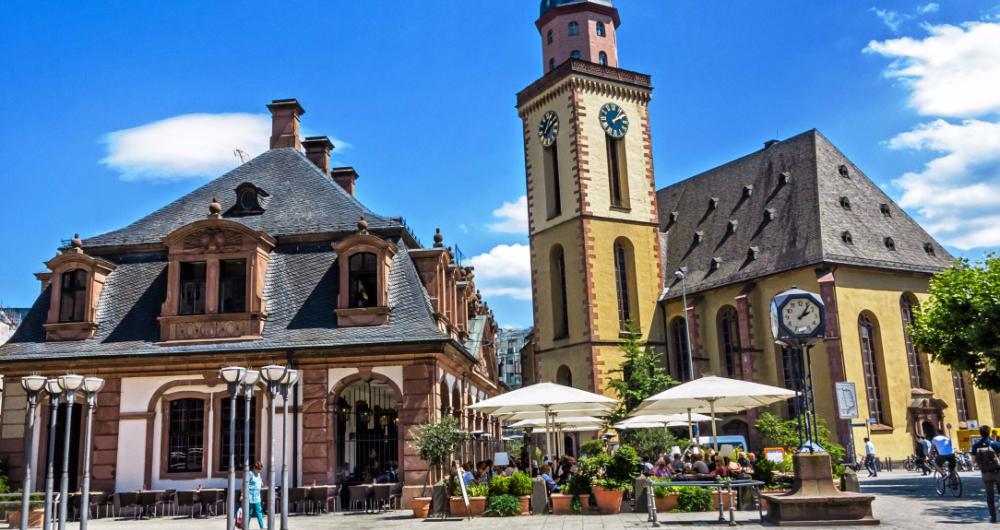In This Article
Need a refreshing break from city life? These trips from Stuttgart offer fairytale castles, wine country, and charming towns just a short ride away!
😍 If you are in a hurry, I recommend:
- Visit the iconic hilltop Ludwigsburg Palace and its blooming gardens.
- Explore the cobbled streets and half-timbered houses of Tübingen.
- Hike through the Black Forest near Bad Wildbad or Baiersbronn.
- Tour Hohenzollern Castle for panoramic views and medieval flair.
- Relax with a wine tasting in the Württemberg vineyards.
Unique Day Trips from Stuttgart:
1. Altensteig
♥
"Stroll through half-timbered streets and admire hilltop views on a peaceful retirement trip."

© reinhard sester/stock.adobe.com
Altensteig is a southern German town dating back to the Middle Ages. Several wood-framed buildings, more than 500 years old, still stand, including Altensteiger Schloss, a Medieval castle dating back to the 1200’s, the only one of its kind still standing in the Black Forest region. The castle is now home to a museum and a living history village where visitors can experience typical Black Forest trades, such as silversmithing and leather tanning. Outside the village, the Black Forest natural park offers 1.5 million acres of natural landscape, fishing, hiking, cycling and horseback riding. At the end of the day, try a glass of Riesling, a white wine local to the area.
Altensteig, Germany
2. Bad Urach
💕
"Explore waterfall trails and relax in thermal baths during a rejuvenating weekend getaway."
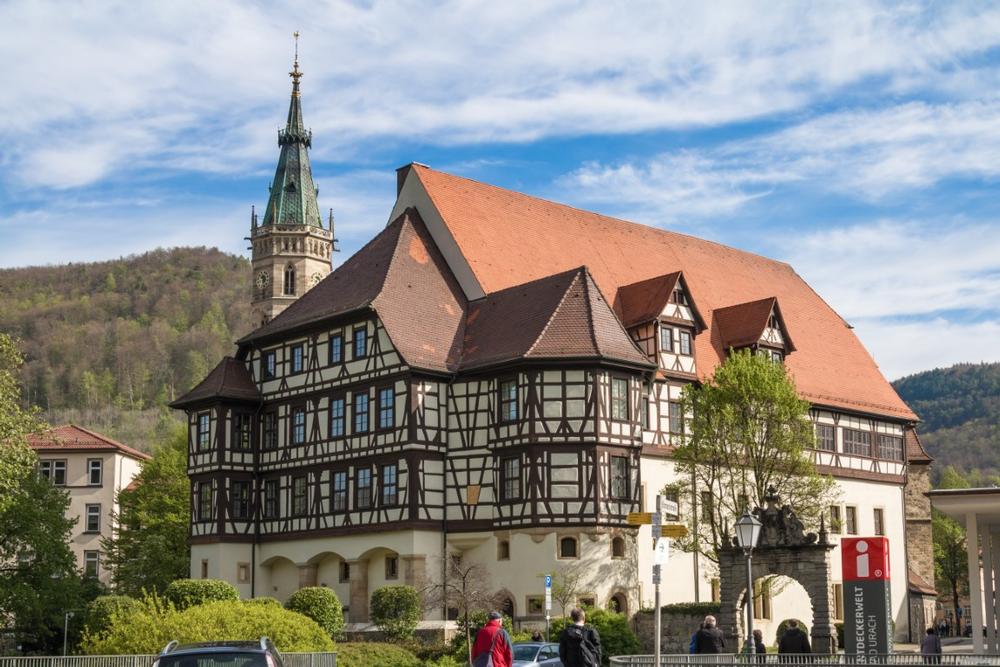
© Sven/stock.adobe.com
Bad Urach is a small town located at the foot of the Swabian Alps in southwest Germany. Classic timber trimmed buildings and cobblestone streets contribute to the small town Bavarian charm. The area is known for its spa and natural thermals. Hiking is among the most popular activities in this UNESCO World Heritage site. Hike to the Urach waterfall, which boasts a 120 foot drop. A more challenging hike takes visitors up a steep climb to the ruins of the Hohenurach castle, built in the 600’s. In town, visit the Royal Palace Bad Urach which dates back to the 1400’s, and is home to a large exhibits of sleighs.
Bad Urach, Germany
3. Bad Wilbad
😊
"Ride the treetop walkway and soak in spas on a refreshing spring retreat."
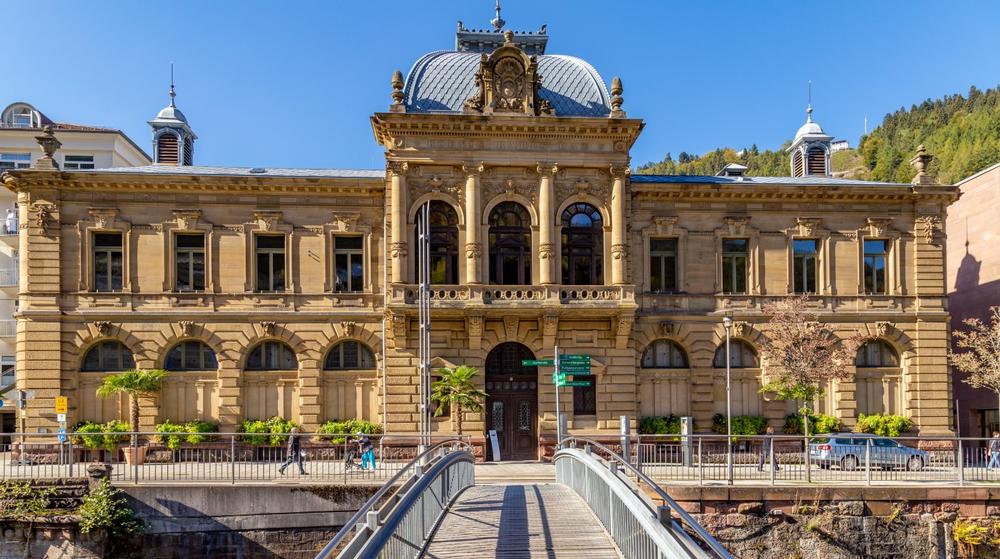
© RWFOTO/stock.adobe.com
Located within the hills of the Black Forest, the small spa town of Bad Wilbad
has been a destination for healing and relaxing for over 600 years. Enjoy any number of spa facilities, each fed by natural thermal springs. Walk along a treetop path for views of the valley and forest. Adventurous travelers will enjoy the pedestrian bridge, a swaying suspension bridge, close to 200 feet above the forest floor. The Wildline Bridge connects to the treetop path and the fairytale trail. In the winter months, over 24 miles of trails for cross-country skiing or snowshoeing are maintained throughout town.
Bad Wilbad, Bad Wilbad, Germany
4. Black Forest
♥
"Hike misty trails and discover cuckoo clock villages on a scenic family vacation."
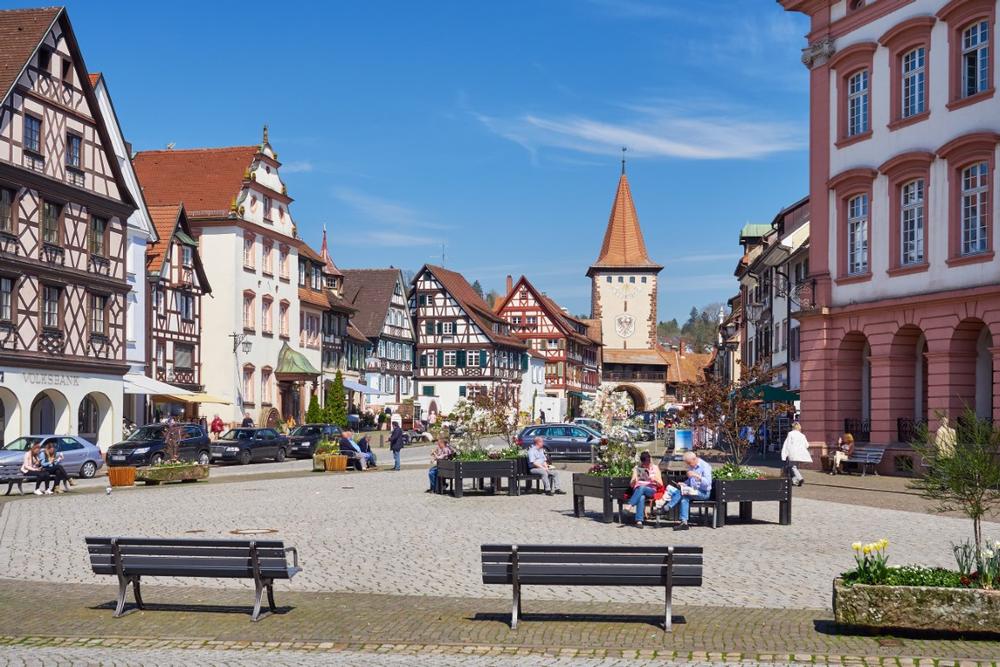
© Manuel Schönfeld/stock.adobe.com
Germany’s Black Forest is a southwestern region spanning over 1 million acres of land. The dense and dark forests offer a dramatic natural landscape of waterfalls, valleys, gorges, rivers and trees. The area is popular for hiking and outdoor activities, and many of the small towns have sprung up around natural thermals surrounded by spa resorts, some dating back to the early 19th century. Two of the larger Black Forest towns include Freiburg, a university town known to locals as the Black Forest capitol and Baden-Baden, a 19th century resort town. Located along the Oos River, Baden-Baden is home to the Gönneranlage rose garden, the Museum Frieder Burda, and the famous Casino Baden-Baden.
Black Forest, Germany
5. Blautopf
My top 5 😎 :
"Admire the vibrant blue spring and photograph limestone cliffs on a quick nature escape."
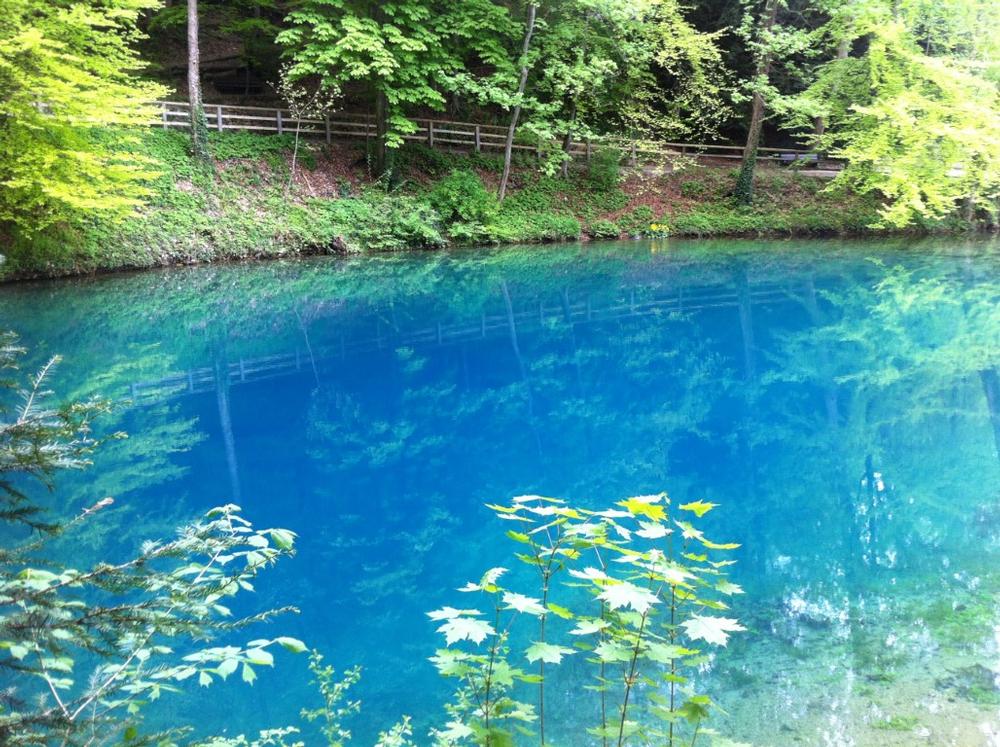
© davada/stock.adobe.com
In southern Germany’s Swabian Alps is a small town called Blautopf where you’ll find Blautopf, a legendary crystal clear blue spring. Waters come to the surface here from an intricate underground cave system fed by rain and snow. The pool at Blautopf forms the headwaters of the Blau River, which eventually flows into the Danube. The funnel shaped spring is over 60 feet deep at its center point, and there’s no shortage of legends of mermaids and mischievous water sprites. Adjacent to the pool is an historic mill, including a blacksmith shop powered by the spring’s waters.
Blaubeuren, Germany
Romantic Day Trips from Stuttgart:
6. Dinkelsbuhl
♥
"Walk medieval walls and explore charming squares on a romantic stroll for couples."
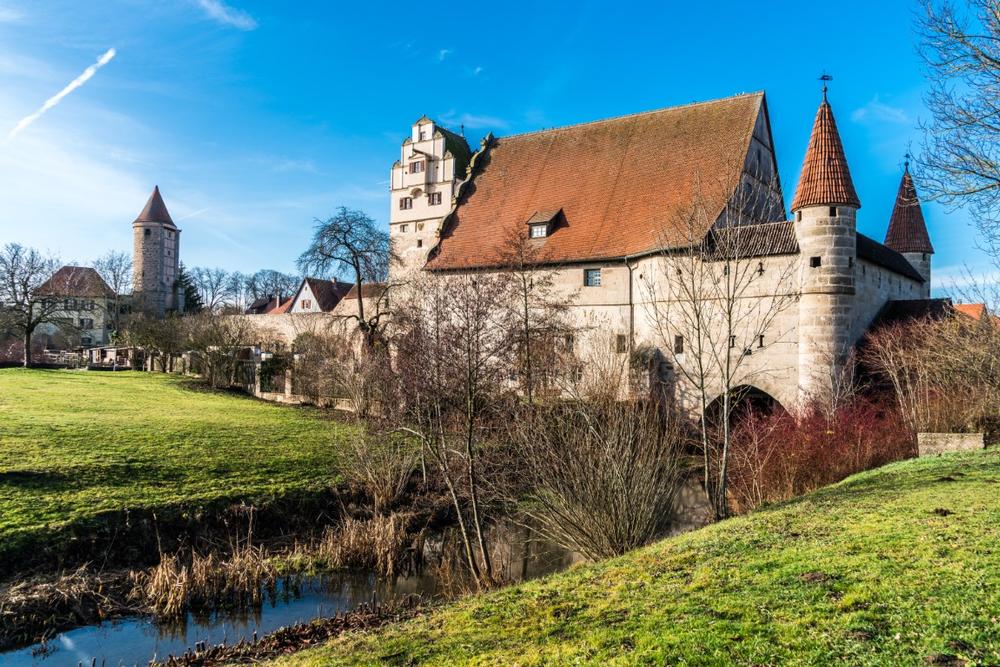
© Andy Ilmberger/stock.adobe.com
Dinkelsbuhl is among several classic Bavarian towns located along Germany’s Romantic Road, a scenic roadway traversing the southern provinces of Baden-Württemberg and Bavaria. Dinkelsbuhl is among the last remaining walled medieval towns and appears much as it did in the Middle Ages, with timbered buildings and cobblestone streets. Founded in the 8th century, the merchant town was known for cloth making and weaving. Visit St. George’s Minister, the grand 15th century church at the city’s center. Each July, the town celebrates the Festival of Kinderzeche, a children’s festival that dates back to Medieval times.
Dinkelsbuhl, Germany
7. Frankfurt
💕
"See modern skyscrapers and tour world-class museums on a dynamic city trip."
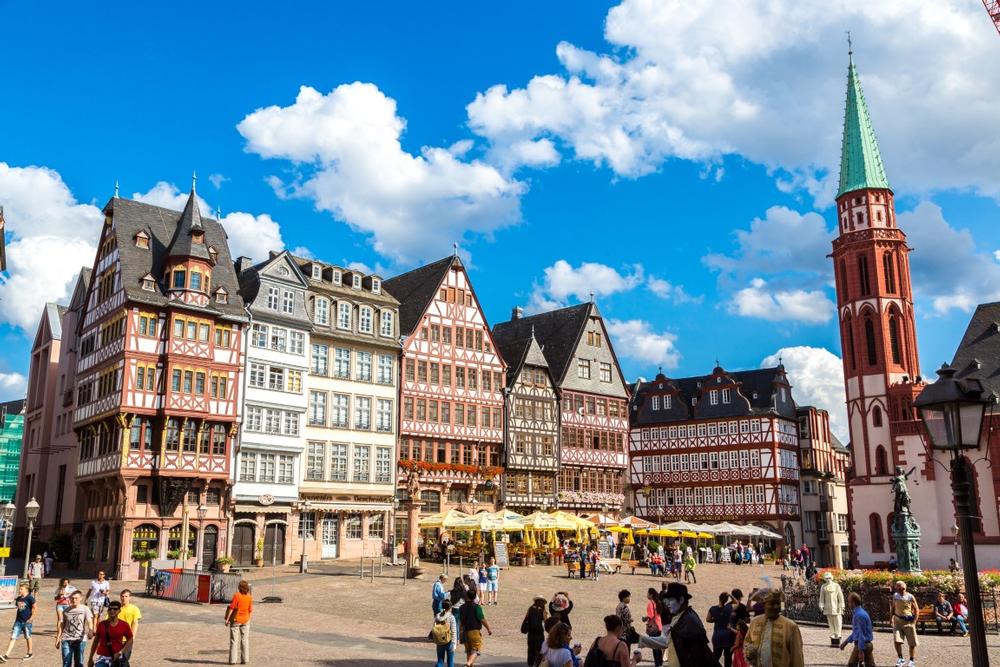
© Sergii Figurnyi/stock.adobe.com
The German city of Frankfurt is located along the River Main. This historic city is the hometown of the famous German writer Goethe, whose 28th century home is now a museum. Most of the town was heavily damaged in World War II and has since been rebuilt, including the city’s center square, Altstadt , or Old Town. Located between the Emperors' Cathedral and Romer City Hall, Old Town is host to one of Germany’s most visited Christmas markets. Among the museums, visit the Cathedral Museum to see rare and intricate ecclesiastical artifacts, and the Jewish Museum for a history of Jewish communities in Frankfurt from the 12th to 20th century. Stroll the banks of the river and enjoy a walking and cycling path, parks and green spaces.
Frankfurt, Germany
8. Freiburg
💕
"Bike along sunny streets and explore eco-friendly shops on a lively summer day."
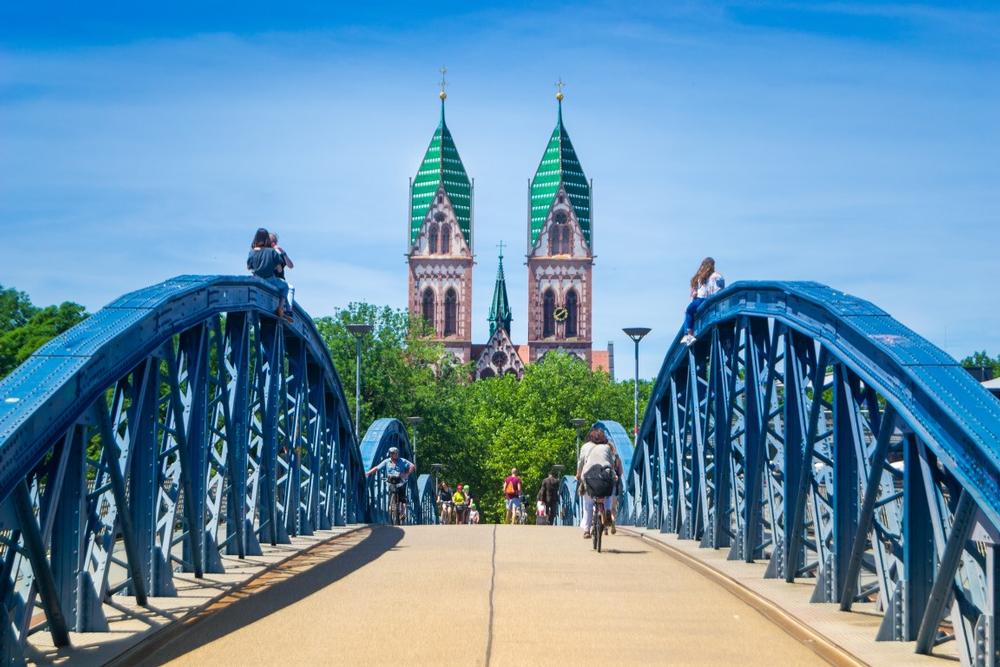
© tichr/stock.adobe.com
Freiburg is a historic town in Germany’s Black Forest region. Cobblestone streets and miniature streams add to the town’s historic charm. The 13th century Gothic Freiburg Cathedral took nearly 300 years to complete and boasts a nearly 400-foot tall spire. A 750 year old three ton bell still rings in the cathedral today. The Cathedral Market in the heart of Freiburg’s old town overflows with fresh fruits and vegetables, meats and baked breads. Walk off your meal with a stroll across the Wiwilí Bridge, a pedestrian fairway built in the late 1800’s, famously painted blue.
Freiburg
, Germany
Family Day Trips from Stuttgart:
9. Heidelberg
I Recommend 🎈 :
"Wander castle ruins and stroll the Philosopher’s Walk on a romantic hillside outing."
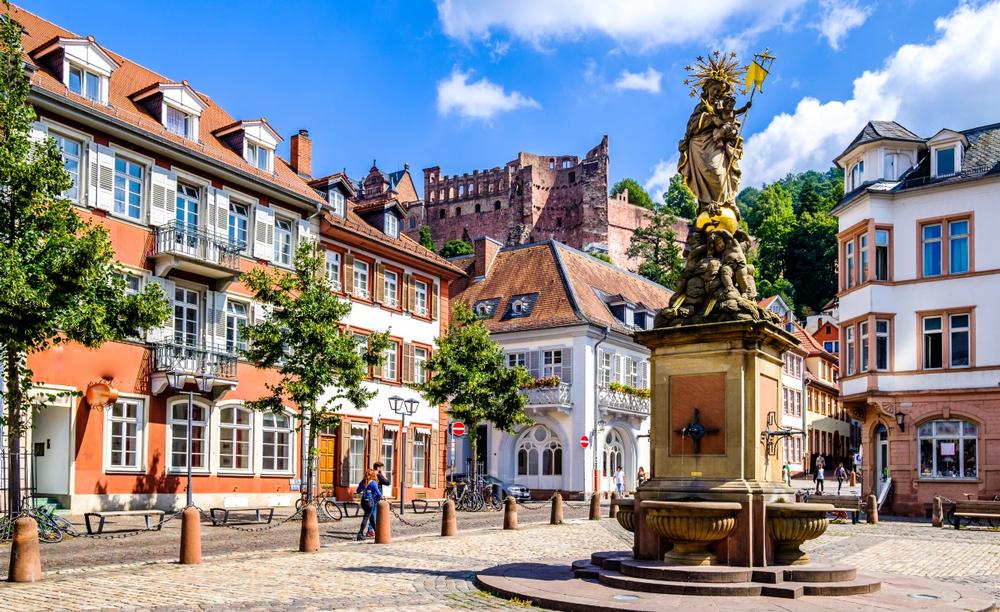
© fottoo/stock.adobe.com
Heidelberg is among Germany’s most visited towns. The university city is home to the famous 13th century Heidelberg Castle. Partially in ruins, and partially rebuilt after being demolished in the 1600’s, the castle is among the most important examples of Gothic and Renaissance architecture. Tours are available of the castle and the extensive surrounding gardens. Step in to any of the historic churches, whose spires line the Heidelberg skyline. Annual events include the Heidelberg Christmas market, autumn’s Heidelberger Herbst craft market, and the Castle Illuminations which takes place three times yearly, lighting the castle with fireworks and spotlights.
10. Hohenzollern Castle
My top 10 💯 :
"Climb castle towers and admire panoramic views on a dream trip for history lovers."
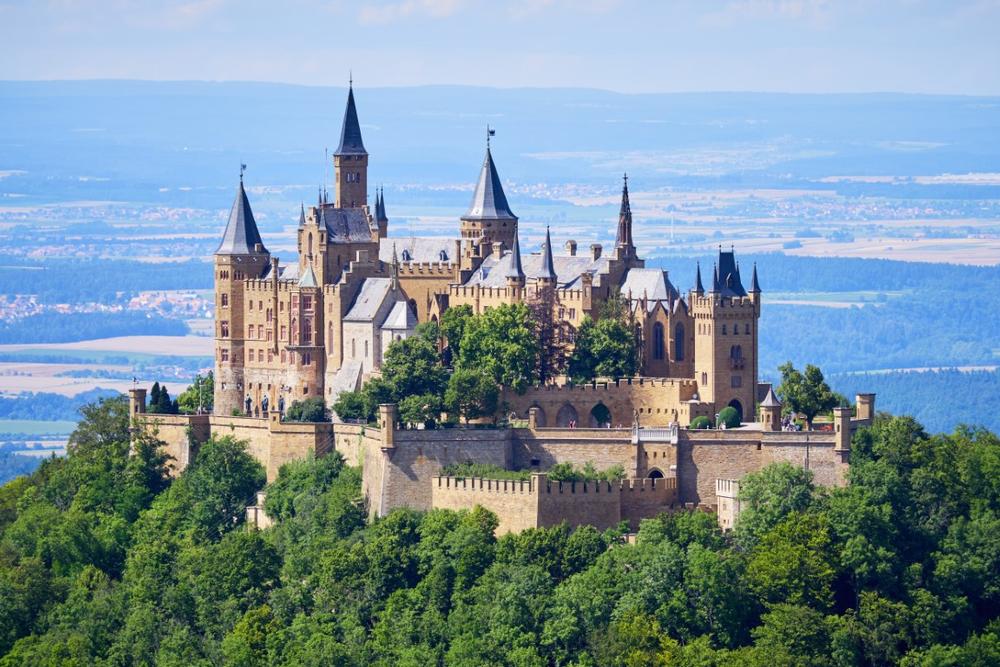
© Manuel Schönfeld/stock.adobe.com
Germany’s Hohenzollern Castle is located just 30 miles south of Stuttgart. The Medieval castle, which is the ancestral seat of the Hohenzollern family was destroyed and rebuilt several times, most recently with a distinct Gothic-Revival style. To visit, hike twenty minutes or take a shuttle from the parking lot to the castle’s entrance. Stroll the castle complex, or visit the interior rooms with a guide. The privately owned property was restored by the Hohenzollern descendents in the 19th century and houses the family’s art collection, silver, china and the crown of the Prussian King. The castle is host to numerous events, including a summer concert series, exhibitions, running races, and one of the most beautiful Christmas markets in Germany.
Hohenzollern Castle, Burg Hohenzollern, D-72379 Burg Hohenzollern, Germany, Phone: +49-0-74-71-24-28
📔 I get asked this a lot so I decided to include it:
-
Q: What makes Germany a great destination for day trips?
-
A: Germany has many day trip ideas where you’ll find over 2,000 years of history, great nature, and amazing food.
-
Q: What is special about the Swabian Alps in Germany?
-
A: The Swabian Alps, the mountain range extending through Germany’s southwest, is bordered to the southeast by the Danube River and to the north by the River Neckar.
-
Q: What can visitors explore in the Swabian Alps region?
-
A: Explore the area for Medieval and Renaissance era history, outdoor recreation, local arts and crafts, and regional wines and cuisine.
Best Time for Day Trips from Stuttgart, Germany:
- April to June – Spring brings blooming vineyards, mild weather, and perfect conditions for castles, gardens, and countryside walks.
- July to August – Summer is ideal for lake outings, forest hikes, beer gardens, and historic towns full of life.
- September to October – Enjoy fall foliage, wine festivals, and scenic drives through the Swabian countryside and Black Forest.
- November – Cool and calm—great for museums, spa towns, and exploring quiet medieval villages.
- December to March – Winter offers festive Christmas markets, snowy Black Forest escapes, and cozy small-town charm.
🖋 How did I do?
Is the article too broad, too narrow, or just right ? Do you like the presentation of photos and text? Let me know in the comments! If you want to see more in this location, I can put it on my editorial calendar. I'm listening!
Plan Your Trip


